Espresso
Is An Espresso Just A Shot Of Coffee?

Espresso, the concentrated and intense coffee beverage, has become an essential part of my daily routine. As a coffee lover, I appreciate the complex flavors and aromas that espresso offers. But, is an espresso just a shot of coffee? The answer is not as simple as it may seem.
To understand the difference between espresso and coffee, we need to delve into the history, production, and flavor profiles of these two beloved beverages. From the birthplace of coffee in Ethiopia to the modern-day coffee shops in Italy and the rest of the world, coffee has captured the hearts and taste buds of millions of people.
However, espresso, with its distinct brewing method and unique flavor, has a special place in the hearts of coffee enthusiasts. Join me on a journey to explore the intricacies of espresso and coffee, their cultural significance, and their ethical and sustainable production.
Key Takeaways
- Espresso is not just a shot of coffee; it has unique characteristics, including a concentrated and bold flavor, higher caffeine concentration, and complex flavor profile.
- Making espresso takes skill and experience, and requires finer grind and specialized machines.
- Coffee and espresso have cultural significance worldwide, with regional variations in brewing methods and flavor profiles contributing to this significance.
- Sustainability and ethics are becoming increasingly important in the coffee industry, with fair trade practices and sustainable farming practices benefiting both farmers and the environment.
A Brief History of Espresso and Coffee
So, you might be wondering, "Did you know that espresso has a rich history that dates back to the early 20th century?"Well, it all started in Italy when the first espresso machine was invented in 1901. The machine was created to make coffee faster and the resulting drink was a concentrated shot of coffee, which was named espresso.
Espresso quickly became a cultural icon in Italy and spread throughout Europe and the rest of the world. It became a symbol of Italian coffee culture and was even declared an intangible cultural heritage by UNESCO in 2019. The economic implications of this cultural impact were significant, as the popularity of espresso led to the creation of countless coffee shops and cafes worldwide.
Despite its popularity, many people still wonder what sets espresso apart from regular coffee. The differences between espresso and coffee are not just in the preparation method, but also in the taste, texture, and strength of the resulting drink.
So, let’s dive into the specifics and explore the unique characteristics of espresso.
The Differences Between Espresso and Coffee
Brewed using a fine grind and high pressure, the dark liquid produced is concentrated and bold in flavor, distinguishing it from the classic morning beverage. Espresso is not just a shot of coffee.
The brewing methods used to create espresso are different from traditional coffee, which accounts for the stark contrast in flavor. Here are four ways these two beverages differ:
-
Caffeine content: Espresso has a higher concentration of caffeine per ounce than regular coffee. A shot of espresso contains about 63 milligrams of caffeine, while an 8-ounce cup of coffee has 95 milligrams.
-
Grind size: Espresso requires a finer grind than coffee. The fine grind allows for a quicker extraction time, resulting in the concentrated, bold flavor of espresso.
-
Brewing method: Traditional coffee is brewed by slowly dripping hot water over a bed of coffee grounds, whereas espresso is brewed by forcing hot water through tightly packed, finely ground coffee under high pressure.
-
Serving size: Espresso is served in small, 1-2 ounce shots, while coffee is typically served in larger 8-ounce cups.
Understanding the differences between espresso and coffee is crucial in appreciating the unique flavor of each beverage.
In the next section, we’ll delve into how espresso is made and the intricate steps involved in producing the perfect shot.
How Espresso is Made
Get ready to experience the magic of a deliciously concentrated, bold, and flavorful beverage that requires a fine grind, high pressure, and a unique brewing method.
Espresso is made using specialized machines that force hot water through finely ground coffee beans at a pressure of around 9 bars. The intense pressure extracts the oils and flavors from the beans, resulting in a small shot of coffee that is packed with flavor.
One of the defining characteristics of espresso is the crema that forms on top of the shot. This layer of foam is created by the high pressure used to brew the coffee. The crema not only adds to the aesthetic appeal of the beverage but also contributes to its unique flavor profile. The consistency of the crema is an important factor in determining the quality of the espresso shot.
The process of making espresso is a delicate balance between the grind of the coffee beans, the pressure of the machine, and the timing of the shot. It takes skill and experience to get it just right.
Now that we understand how espresso is made, let’s move on to the next section and explore the flavor profile of this beloved beverage.
The Flavor Profile of Espresso
You’re in for a treat as you discover the complex and rich flavor profile of this concentrated and bold beverage. Espresso strength is not just about the caffeine content, but also the intensity of the flavor. It’s a perfect balance of sweet and bitter taste that lingers in your mouth.
The aroma notes of espresso can vary from chocolate and caramel to fruity and floral, depending on the type of coffee beans used to make it. To fully appreciate the flavor of espresso, here are four things to consider:
-
Savor it slowly: Take your time to enjoy every sip of espresso. Let the flavors linger in your mouth and appreciate the richness of the coffee.
-
Pair it with food: Espresso pairs well with chocolate, pastries, and other desserts. The sweetness of the food complements the bitterness of the coffee, creating a perfect balance.
-
Experiment with different roasts: Different roasts can bring out different flavors in espresso. Try different roasts to find the one that suits your taste.
-
Pay attention to the crema: The crema, the layer of foam on top of the espresso, is an important part of the drink. It adds a creamy texture to the coffee and enhances the flavor.
As you can see, there’s more to espresso than just a shot of coffee. It’s a drink that requires attention to detail and appreciation of the flavor. Now, let’s move on to how coffee is made.
How Coffee is Made
When it comes to creating your daily cup of joe, it’s like conducting a symphony of water and ground beans. The process starts with the coffee bean itself. There are two main types of coffee beans: Arabica and Robusta. Arabica beans are considered to have a better taste profile, while Robusta beans contain more caffeine.
Once the beans are selected, they undergo a roasting process, which is where the flavor profile of the coffee is developed. There are different roasting techniques that can be used, such as light, medium, and dark roasts. Each roast brings out different flavors and aromas in the coffee. Light roasts tend to have a more acidic and fruity flavor, while dark roasts have a more bold and smoky flavor.
The process of making coffee involves selecting the right coffee beans and roasting them to perfection. The roasting process is where the flavor profile of the coffee is developed, and there are different roasting techniques that can bring out different flavors and aromas.
This leads us to the next section, where we will discuss the flavor profile of coffee.
The Flavor Profile of Coffee
Now that we know how coffee is made, let’s talk about the different flavors and aromas that make each cup unique.
As a coffee lover, I know that taste preferences can vary greatly from person to person. Some prefer a bold and bitter taste, while others enjoy a sweeter and smoother flavor profile. But what about the aroma? The scent of coffee can be just as important as the taste, with notes of chocolate, caramel, and even floral undertones adding depth to the drinking experience.
The flavor profile of coffee can be affected by several factors, including the type of bean, the roast level, and the brewing method. Arabica beans, for example, are known for their complex flavors and aromas, while Robusta beans have a stronger, more bitter taste. The roast level can also impact the taste, with lighter roasts having a more acidic and fruity flavor, and darker roasts having a richer and more caramelized taste.
And let’s not forget about the brewing method – whether it’s a French press, pour-over, or espresso machine, each method can bring out different flavors and aromas in the coffee.
As for my own preferences, I tend to gravitate towards medium roasts with notes of chocolate and nuttiness, brewed using a pour-over method. But I also enjoy experimenting with different types of beans and brewing methods to discover new flavors and aromas. It’s all part of the fun of being a coffee enthusiast!
Moving on to the health benefits of espresso and coffee, it’s important to note that while caffeine can have negative effects in excess, moderate consumption can actually provide some health benefits. Let’s explore this further.
Health Benefits of Espresso and Coffee
Ah, the joys of a morning cup! Did you know that moderate consumption of this beloved beverage can actually provide health benefits?
Here are four reasons why coffee and espresso can be good for you:
-
Weight loss: Coffee and espresso contain caffeine, which can help boost your metabolism and increase fat burning. Studies have shown that caffeine can help with weight loss by reducing appetite and increasing energy levels.
-
Cognitive benefits: Coffee and espresso have also been linked to improved brain function and a reduced risk of cognitive decline. The caffeine in coffee can help improve focus, memory, and reaction time.
-
Reduced risk of disease: Regular coffee consumption has been associated with a reduced risk of diseases such as Alzheimer’s, Parkinson’s, and liver disease. It may also lower the risk of certain types of cancers.
-
Nutritional benefits: Coffee and espresso are a good source of antioxidants, which can help protect your cells from damage caused by free radicals. They also contain important nutrients like potassium, magnesium, and niacin.
So, the next time you reach for that cup of coffee or shot of espresso, remember that it’s not just a delicious way to start your day – it could also be doing your body some good.
Now, let’s explore the cultural significance of this beloved beverage.
Cultural Significance
The cultural significance of this beloved beverage cannot be overstated, as it’s estimated that over 2.25 billion cups of this drink are consumed daily worldwide. Coffee, and its concentrated sibling, espresso, have both played important roles in cultural traditions around the globe.
In Italy, for example, espresso is often enjoyed in small ceramic cups, while in Turkey, it’s served in tiny glasses. In some cultures, coffee is a symbol of hospitality and is offered to guests as a sign of respect.
Regional variations in brewing methods and flavor profiles have also contributed to the cultural significance of espresso and coffee. In Ethiopia, coffee is often roasted over an open flame and brewed with spices, while in Latin America, coffee is grown at high altitudes and has a distinct fruity flavor. These variations have given rise to unique coffee cultures in different parts of the world, each with its own set of traditions and rituals.
As consumers become increasingly aware of the origin and production methods of their favorite beverages, sustainability and ethics are emerging as important factors in the coffee industry. As we’ll explore in the next section, the environmental impact of coffee production and the fair treatment of workers are key issues that must be addressed in order to ensure the continued cultural significance of this beloved drink.
Sustainability and Ethics
You might be surprised to learn that sustainability and ethics are becoming increasingly important factors in your favorite beverage’s industry.
More and more coffee shops and roasters are adopting fair trade practices and prioritizing the reduction of their carbon footprint.
It’s not just about making a delicious cup of coffee, but also about ensuring that the production process is sustainable and ethical.
Fair trade practices ensure that the coffee farmers are getting paid a fair price for their beans, and that they are working in safe conditions.
It also encourages sustainable farming practices, which not only benefit the environment, but also the long-term viability of the coffee industry.
By supporting fair trade, we can help lift farmers out of poverty and ensure that we have a steady supply of delicious coffee for years to come.
Reducing the carbon footprint of the coffee industry is also crucial for sustainability.
This can be achieved through various methods, such as using renewable energy sources, reducing waste, and improving transportation methods.
By reducing our carbon footprint, we can help mitigate the effects of climate change and ensure a healthier planet for generations to come.
So, the next time you enjoy a delicious espresso, remember that sustainability and ethics are just as important as the taste.
Frequently Asked Questions
What is the difference between a latte and an espresso?
I’m a coffee lover and one of my favorite drinks is a latte. A latte is a coffee-based beverage that is made with espresso and steamed milk. The difference between a latte and an espresso is that a latte has more milk and is usually served in a larger cup.
To make a latte, baristas use milk frothing techniques to create a creamy and velvety texture, which is perfect for latte art. Latte art is the practice of creating designs on the surface of a latte using steamed milk. It’s a skill that requires practice and precision, and it’s always impressive to see a beautifully crafted latte.
In contrast, an espresso is just a shot of coffee, without any milk or additional ingredients. Despite its simplicity, making a good espresso is an art form that requires attention to detail and a deep understanding of the coffee beans and brewing process.
So, while a latte and an espresso may seem similar at first glance, they are actually quite different in terms of taste, texture, and preparation.
How long should an espresso shot be pulled for?
When it comes to pulling a great espresso shot, there are a few key factors to consider. The optimal extraction time for an espresso shot is typically between 20 and 30 seconds.
During this time, hot water is forced through finely ground coffee beans, extracting the flavorful oils and compounds that give espresso its rich, complex flavor profile. Of course, the exact extraction time will depend on a variety of factors, including the type and roast level of the beans, the pressure and temperature of the machine, and the importance of grind size.
In fact, the grind size is one of the most crucial elements in pulling a perfect espresso shot. Too fine a grind can result in a bitter, over-extracted shot, while too coarse a grind can lead to a weak, under-extracted shot.
As a passionate coffee lover, I believe that getting the perfect extraction is essential for creating an unforgettable espresso experience.
Can you make espresso with regular coffee beans?
Yes, you can make espresso with regular coffee beans. However, there are some key differences in taste and quality compared to using espresso-specific beans. Using regular coffee beans will result in a less intense and nuanced flavor profile, and may also produce a weaker crema.
Additionally, grind size plays a crucial role in the quality of the espresso shot, regardless of the type of beans used. For espresso, a finer grind is necessary to achieve the correct extraction time and pressure.
While regular coffee beans can be used to make espresso, it may not produce the same rich and complex flavor that espresso-specific beans are known for. As a coffee lover, I personally prefer using espresso-specific beans for my espresso shots, as they provide a more satisfying and flavorful experience.
What is the ideal brewing temperature for espresso?
I know what you might be thinking, "Does the temperature really matter that much when brewing espresso?"The answer is yes, it absolutely does.
The ideal brewing temperature for espresso is between 195°F and 205°F. This range ensures that the coffee is extracted evenly and results in a shot that is rich in flavor and aroma.
Additionally, the duration of the shot also plays a crucial role in the quality of the espresso. It should take between 20-30 seconds for the shot to be extracted. Anything less than 20 seconds will result in a weak and under-extracted shot, while anything over 30 seconds will lead to a bitter and over-extracted shot.
As a passionate coffee enthusiast, I can attest to the importance of getting these details right in order to achieve the perfect cup of espresso.
How does the crema on top of an espresso shot affect the flavor?
As a coffee enthusiast, I’ve learned that the crema on top of an espresso shot plays a significant role in the overall flavor of the drink.
Crema chemistry is a complex process that involves the emulsification of coffee oils and carbon dioxide during the espresso extraction. It creates a creamy, golden layer on top of the shot that not only looks beautiful but also enhances the flavor.
The crema’s texture and thickness affect the mouthfeel, while its color and aroma contribute to the overall sensory experience. In terms of taste, the crema can mask or accentuate certain flavors in the coffee, depending on its composition.
As a result, the crema can either make or break an espresso shot. So, understanding the crema and how it affects our taste buds is crucial for any coffee lover who wants to enjoy a perfect cup of espresso.
Conclusion
So, is an espresso just a shot of coffee? The answer is no.
While both espresso and coffee come from the same source, they are vastly different in terms of flavor, preparation, and cultural significance.
Espresso is a concentrated shot of coffee that’s made by forcing hot water through finely ground coffee beans under high pressure. It has a rich, bold flavor and a thick, creamy texture that’s perfect for sipping on its own or as the base for a variety of coffee drinks.
On the other hand, coffee is made by steeping coarsely ground coffee beans in hot water for several minutes. It has a milder flavor and a thinner texture than espresso, and is often enjoyed with milk or cream and sugar.
Both espresso and coffee have their own unique flavor profiles and health benefits, and are an important part of many cultures around the world.
As a coffee lover, I’m passionate about the art and science of coffee making. From the history and cultural significance of coffee to the sustainability and ethics of coffee production, there’s so much to learn and appreciate about this beloved beverage.
So, the next time you enjoy a cup of coffee or a shot of espresso, take a moment to savor the flavor and appreciate the hard work and dedication that goes into making this delicious drink.
Arf, an author and an innovative enthusiast of coffee, coffee alternatives, and tea, plays a crucial role as a contributor to the esteemed Cappuccino Oracle platform. Renowned for his curiosity and passion for these captivating beverages, Arf has carved out a unique space for himself in the world of exploration and writing. He realized that coffee, coffee alternatives, and tea are not mere drinks to keep one awake, but universes of flavors and stories waiting to be explored.
Arf’s articles for Cappuccino Oracle blend meticulous research with personal experiences, providing readers with an in-depth understanding of various types of coffee, coffee alternatives, and tea, along with their unique characteristics, cultures, and histories. His honest reviews and engaging narratives guide readers on their own journeys, helping them discover their preferences and find their perfect brew.
Espresso
Unleash Your Inner Barista: Brewing Espresso in the Great Outdoors

Are you tired of the boring routine of making your morning coffee inside? We have a new and exciting experience for you! Picture waking up to the tranquil beauty of nature, with stunning views all around, while savoring the delicious taste of gourmet coffee.
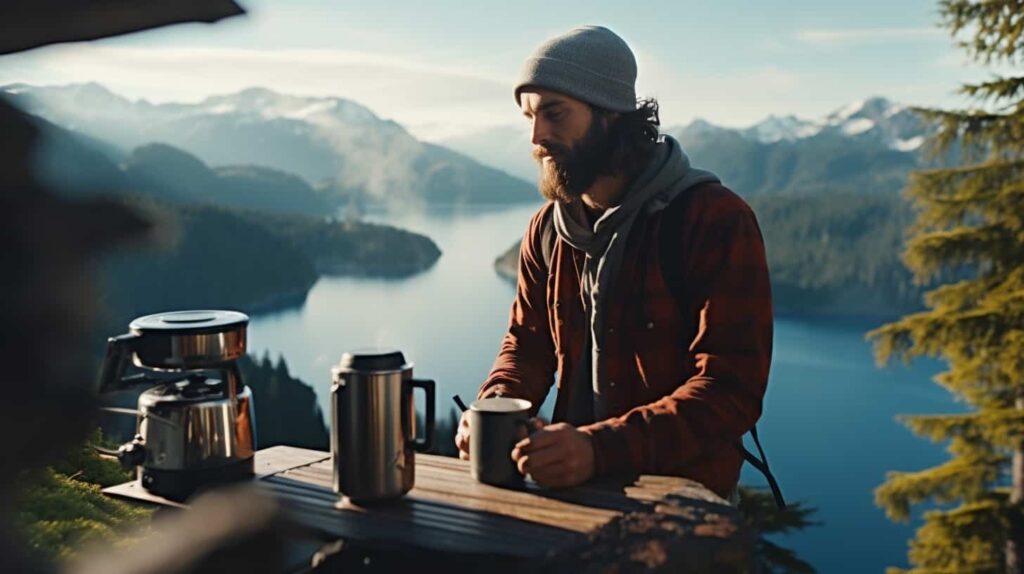
In this article, we’ll guide you on how to unleash your inner barista and brew espresso in the great outdoors. So, grab your equipment and join us on this exciting journey of becoming a barista in nature’s embrace.
Let’s get brewing!
Key Takeaways
- Brewing espresso outdoors allows you to experience peace and tranquility, connect with nature, and appreciate the brewing process.
- To enhance your outdoor espresso brewing experience, adjust the grind size using the Flair Royal hand grinder and pre-measure your coffee beans for consistency.
- It is important to be responsible in the outdoors by packing out used coffee grounds and trash, following local waste disposal regulations, and incorporating sustainable practices.
- The Flair PRO 2 Manual Espresso Maker offers easy maintenance, versatile brewing techniques, and complete control over the brewing process, resulting in exceptional espresso quality.
The Equipment You’ll Need
First, let’s talk about the equipment you’ll need to brew espresso in the great outdoors. When it comes to brewing espresso outside, choosing the right location is key. Find a serene spot, surrounded by nature’s beauty, where you can immerse yourself in the process.

Now, let’s not forget the importance of water quality. For a truly exceptional espresso, start with pristine water. Consider using filtered or bottled water to ensure the purest flavor.
As for the equipment, you’ll need a reliable water heating system, like the JetBoil Flash, to achieve the perfect temperature. Pair it with the Flair PRO 2 Manual Espresso Maker and the Flair Royal Hand Grinder for precision grinding and extraction.
With these tools in hand, you’ll be ready to unleash your inner barista and create a magical espresso experience in the great outdoors.
Benefits of Brewing Outside
Why should we choose to brew espresso outside and experience the benefits it offers? Brewing espresso in the great outdoors allows us to embrace nature while indulging in our passion. It is a truly immersive experience that brings us closer to the process and the flavors we love. Imagine waking up to the peaceful escape and tranquility of nature, surrounded by spectacular views and breathtaking landscapes.
As we brew our espresso, we feel connected to the earth, mindful of our actions, and grateful for the moment. The whole process becomes a mindful experience, where we savor each step and each sip.
Brewing outside creates memorable moments, allowing us to appreciate the beauty of nature while enjoying our favorite drink. It’s an intimate journey that combines the art of brewing with the wonders of the natural world.

Benefits of Brewing Outside Embracing Nature While Brewing Peaceful Escape and Tranquility Feel the serenity of nature while brewing your espresso. Spectacular Views and Breathtaking Landscapes Surround yourself with the beauty of the outdoors as you enjoy your drink. Embracing the Process and Connection with Nature Connect with the earth and the brewing process, feeling grounded and in harmony. Mindful Experience and Indulging in Flavors Engage your senses, appreciating every sip and the flavors that nature provides. Creating Memorable Moments Forge lasting memories as you combine your love for brewing with the wonders of nature.
Tips for Outdoor Espresso Brewing
Here are some essential tips to enhance our outdoor espresso brewing experience:
-
Grind Size Adjustment: The key to a perfect espresso lies in the grind size. With the Flair Royal hand grinder, we’ve the flexibility to adjust the grind size to our preference. Whether we prefer a fine grind for a bold and intense flavor or a coarser grind for a smoother taste, the choice is in our hands.
-
Pre-Measuring Coffee Beans: To ensure consistency and convenience in our outdoor brewing, it’s essential to pre-measure our coffee beans. By weighing and pre-dosing the coffee, we can eliminate guesswork and achieve the perfect coffee-to-water ratio every time. This step not only saves time but also guarantees a delicious cup of espresso.
-
Practicing Patience and Enjoying the Journey: Outdoor espresso brewing is more than just making a cup of coffee. It’s about embracing the process, being mindful of our surroundings, and immersing ourselves in the experience. Take a moment to appreciate the aroma, savor each sip, and create lasting memories in the great outdoors.

With these tips, we can elevate our outdoor espresso brewing to new heights of flavor and enjoyment.
Being Responsible in the Outdoors
Let’s talk about the importance of being responsible in the outdoors when brewing espresso.
As passionate coffee enthusiasts, it’s crucial that we prioritize sustainable practices and leave no trace behind. When enjoying our outdoor brewing adventures, we must remember to pack out used coffee grounds and trash, minimizing our impact on the environment.
It’s essential to be environmentally aware and follow local waste disposal regulations, preserving the beauty of nature for future visitors. By incorporating sustainable practices, such as using reusable coffee filters and opting for biodegradable packaging, we can make a positive difference.

Let’s embrace our love for espresso while also being mindful of the impact we’ve on the outdoors. Together, we can create memorable moments and protect the environment we cherish.
Introducing the Flair PRO 2 Manual Espresso Maker
We are excited to introduce the Flair PRO 2 Manual Espresso Maker, a compact and portable coffee maker that allows us to brew high-quality espresso in the great outdoors. With its sleek design and exceptional performance, the Flair PRO 2 is a must-have for coffee enthusiasts who crave a rich and flavorful espresso experience.

Here are three reasons why the Flair PRO 2 is the perfect companion for your outdoor brewing adventures:
-
Easy Maintenance: The Flair PRO 2 is built to last, with durable materials and a simple cleaning process. Its removable brew head and portafilter make maintenance a breeze, ensuring that your espresso maker stays in top shape.
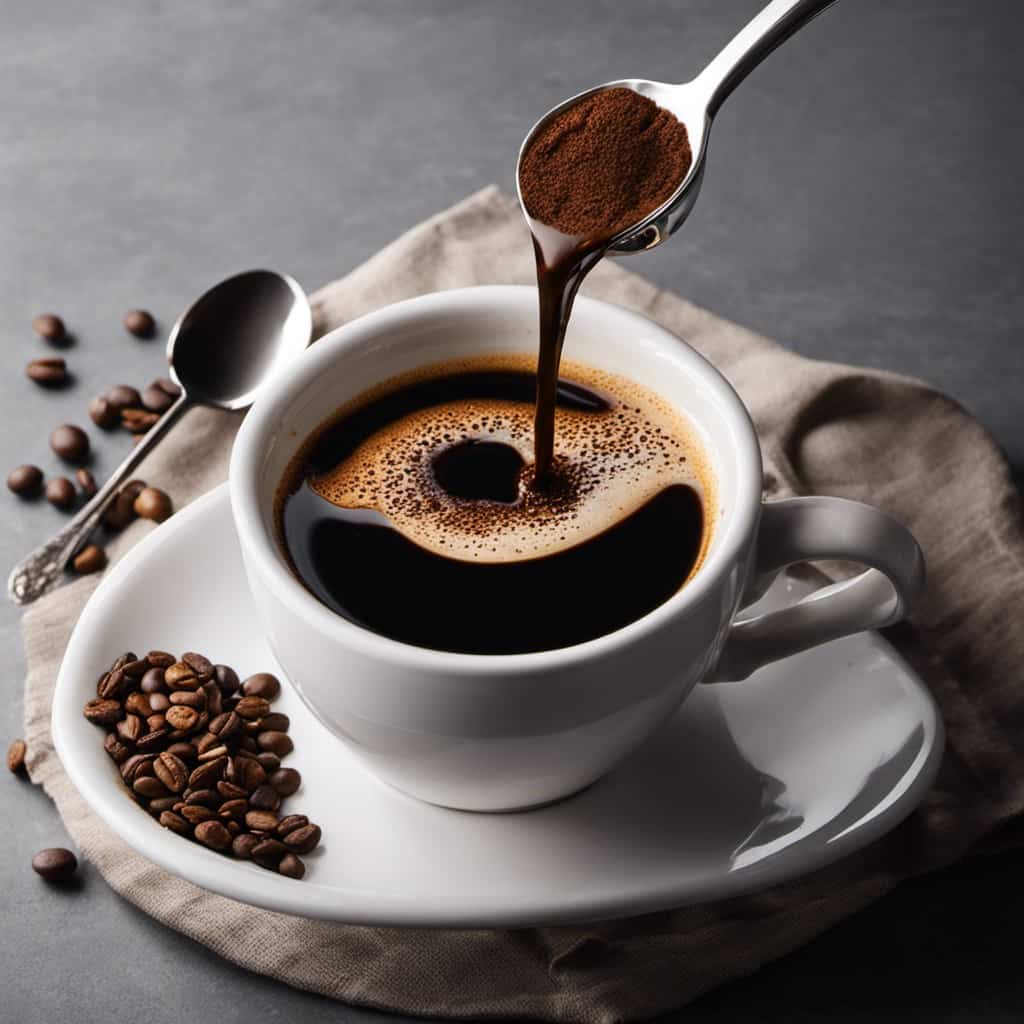
-
Versatile Brewing Techniques: The Flair PRO 2 offers a wide range of brewing techniques, allowing you to experiment and tailor your espresso to your taste. From manual pre-infusion to pressure profiling, this espresso maker gives you complete control over every aspect of the brewing process.Exceptional Espresso Quality: The Flair PRO 2 is designed to deliver exceptional espresso shots, with its precise temperature control and pressure regulation. Whether you prefer a smooth and balanced flavor or a bold and intense shot, the Flair PRO 2 will consistently produce espresso of the highest quality.
With the Flair PRO 2 Manual Espresso Maker, you can elevate your outdoor brewing experience to new heights. From maintenance to brewing techniques, this espresso maker has everything you need to unleash your inner barista in the great outdoors.
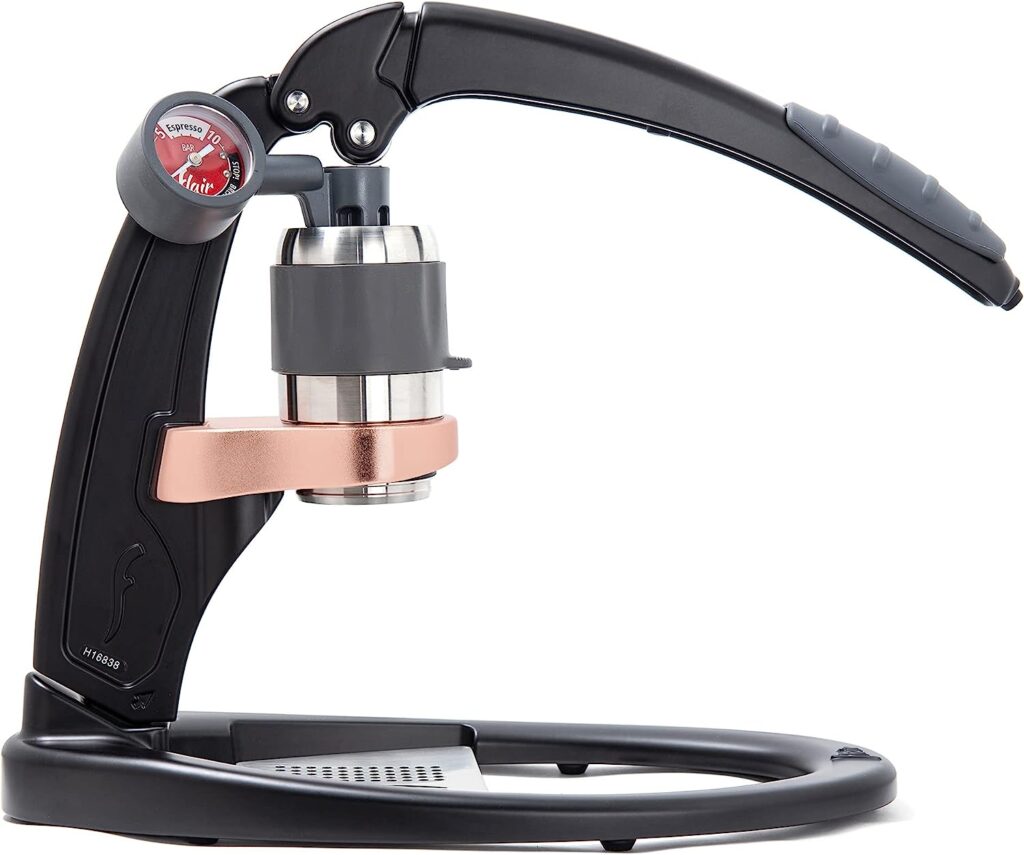
Compact and Portable Design
With its compact and portable design, the Flair PRO 2 Manual Espresso Maker is the perfect espresso machine to take on your outdoor adventures.
This sleek and lightweight espresso maker is specifically designed to be easily transported, allowing you to enjoy your favorite espresso wherever your explorations may take you. Its compact size ensures that it won’t take up much space in your backpack or camping gear, making it an ideal companion for any outdoor enthusiast.
The Flair PRO 2 Manual Espresso Maker’s portability doesn’t compromise on performance either. It’s equipped with high-quality components and features that deliver exceptional espresso shots, ensuring that you can savor the rich flavors and aromas of specialty coffee even in the great outdoors.
Precision Grinding With the Flair Royal Hand Grinder
To achieve the perfect grind size for your outdoor espresso brewing, we recommend using the Flair Royal Hand Grinder and carefully adjusting the settings to ensure precision and consistency. The grind size adjustment feature of the Flair Royal Hand Grinder allows you to have full control over the extraction process, maximizing the flavors and aromas in your espresso.
Here’s why the Flair Royal Hand Grinder is the ideal choice for precision grinding:
-
Consistent Grind: The grinder’s high-quality burrs ensure a uniform grind size, resulting in a balanced extraction and a rich, flavorful espresso.
-
Easy Adjustment: With its simple and intuitive grind size adjustment mechanism, you can easily switch between fine, medium, and coarse settings to match your desired brewing method.
-
Maximizing Extraction: By dialing in the grind size, you can optimize the extraction process, ensuring that the water extracts the desired flavors from the coffee grounds, resulting in a well-balanced and delicious cup of espresso.
The Flair Royal Hand Grinder is the perfect companion for outdoor espresso brewing, providing the precision necessary to create a truly exceptional coffee experience.

Using Specialty Coffee for Optimal Flavor
For the best flavor experience, we recommend brewing your outdoor espresso with specialty coffee. Specialty coffee beans are carefully selected and roasted to bring out the unique flavors and characteristics of each variety. When choosing the right beans for your outdoor brewing, consider factors such as origin, roast level, and flavor profile. Experiment with different varieties to find your preferred taste.
To further enhance the flavor of your outdoor espresso, it’s important to use brewing techniques that bring out the best in your chosen beans. Adjusting the grind size, water temperature, and extraction time can all impact your espresso’s flavor profile.
Try using a coarser grind and a higher water temperature for a bright and fruity espresso. For a more balanced and chocolaty flavor, opt for a finer grind and a slightly lower water temperature.
Table: Brewing Techniques for Different Flavors
Flavor Profile Grind Size Water Temperature Bright and Fruity Coarser Higher Balanced and Chocolaty Finer Slightly Lower
Reliable Water Heating System for Quick Boiling
We rely on a portable and efficient water heating system, like the JetBoil Flash, to quickly boil water for our outdoor espresso brewing. When it comes to brewing espresso in the great outdoors, having a reliable water heating system is crucial. Here’s why the JetBoil Flash is our go-to choice:
-
Speed: With its powerful burner, the JetBoil Flash can bring water to a rolling boil in just a matter of minutes. This means we can enjoy our espresso without any unnecessary waiting around.
-
Convenience: The JetBoil Flash is compact and lightweight, making it easy to transport and set up wherever we go. Its simple and intuitive design allows for effortless operation, even in the most remote locations.
-
Versatility: While the JetBoil Flash excels at boiling water, it also offers alternative heating options, such as simmering and frying. This versatility allows us to expand our outdoor cooking options beyond espresso, making it a valuable addition to our camping gear.
With the JetBoil Flash by our side, we can confidently brew our espresso in the great outdoors, knowing that we’ve a reliable and efficient water heating system at our disposal.

Embrace Your Inner Barista in the Great Outdoors
As coffee enthusiasts, experiencing the great outdoors allows us to embrace our inner barista and connect with the art of brewing espresso. There’s something truly magical about being surrounded by nature, with the soothing sounds of birds chirping and the gentle breeze caressing our faces, as we prepare our favorite cup of coffee.
It’s a moment of tranquility and connection with the world around us. Mindful coffee brewing in the outdoors allows us to fully appreciate the process, from weighing and pre-dosing the coffee beans to carefully adjusting the grind size. We can take our time, savoring the aroma and flavors, while immersing ourselves in the beauty of our surroundings.
It’s a chance to create lasting memories and indulge in the simple pleasures of life. So, let’s grab our equipment, find a serene spot, and let nature inspire our inner barista.
Frequently Asked Questions
Can I Use a Different Manual Espresso Maker for Outdoor Brewing?
Yes, you can use a different manual espresso maker for outdoor brewing. There are many portable espresso makers for camping that offer the convenience and quality you need to enjoy a delicious espresso in the great outdoors.

How Do I Determine the Ideal Grind Size for My Outdoor Espresso Brewing?
To determine the ideal grind size for outdoor espresso brewing, we carefully adjust the grind while considering the desired brew time. This ensures a rich and flavorful cup of espresso that perfectly captures the essence of the outdoors.
Are There Any Specific Types of Specialty Coffee That Work Best for Outdoor Espresso Brewing?
The best coffee beans for outdoor brewing techniques should be specialty beans from reputable local roasters. They offer optimal flavors that enhance the outdoor espresso experience, creating a truly indulgent and memorable moment.
Can I Use a Different Water Heating System Instead of the Jetboil Flash?
Yes, there are alternative water heating systems you can use instead of the Jetboil Flash. We have found success with other portable options like the MSR PocketRocket or the Primus Lite+.
What Are Some Additional Ways to Minimize My Impact on the Environment While Brewing Espresso Outdoors?
To minimize our impact on the environment while brewing espresso outdoors, we can prioritize eco-friendly coffee bean sourcing and opt for sustainable packaging options. It’s important to make conscious choices that align with our values and protect the planet we love.
Conclusion
As we bid farewell to the comforting routine of brewing espresso indoors, we embark on a thrilling journey of becoming outdoor baristas.
With the Flair PRO 2 Manual Espresso Maker as our trusty companion, we unlock a world of rich flavors and breathtaking views.
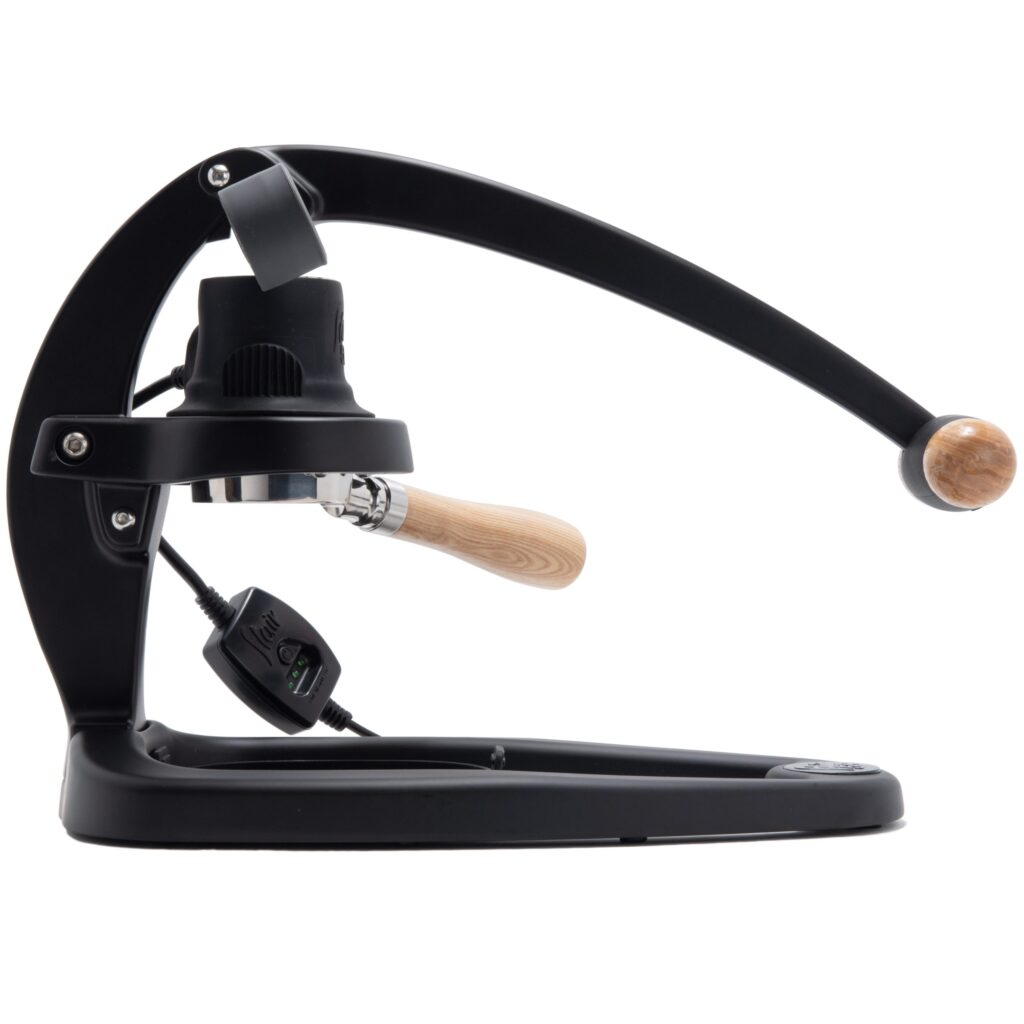
Let nature’s serenity and specialty coffee’s aroma awaken your senses and ignite your passion for the art of outdoor brewing.
So, grab your gear, embrace your inner barista, and let’s make memories in the great outdoors!
In the vast and diverse world of coffee, coffee alternatives, and tea, Olivia has found her calling. As an author and a dedicated coffee and tea aficionado, her work for Cappuccino Oracle reflects her profound love and understanding of the intricate complexities found within these beverages. Olivia’s passion for the subject serves as both a catalyst for her creativity and a connection point with her audience.
Olivia’s appreciation for coffee, coffee alternatives, and tea blossomed at an early age. She discovered that these beverages invigorated her senses and stimulated her creative spirit. From the nuanced flavors of single-origin roasts to the captivating narratives intertwined with coffee, coffee alternatives, and tea trade and culture, Olivia found an unlimited source of inspiration in her daily cup.
Her love for these beverages and her talent for storytelling eventually converged at Cappuccino Oracle. As an author, Olivia’s mission is to illuminate the intricate tapestry that makes up the world of coffee, coffee alternatives, and tea. Her articles span a diverse range of topics, encompassing everything from the unique flavors of different brews to the sociocultural history intertwined with their cultivation and consumption.
Espresso
Mochaccino – What Is It and How Do You Make It at Home
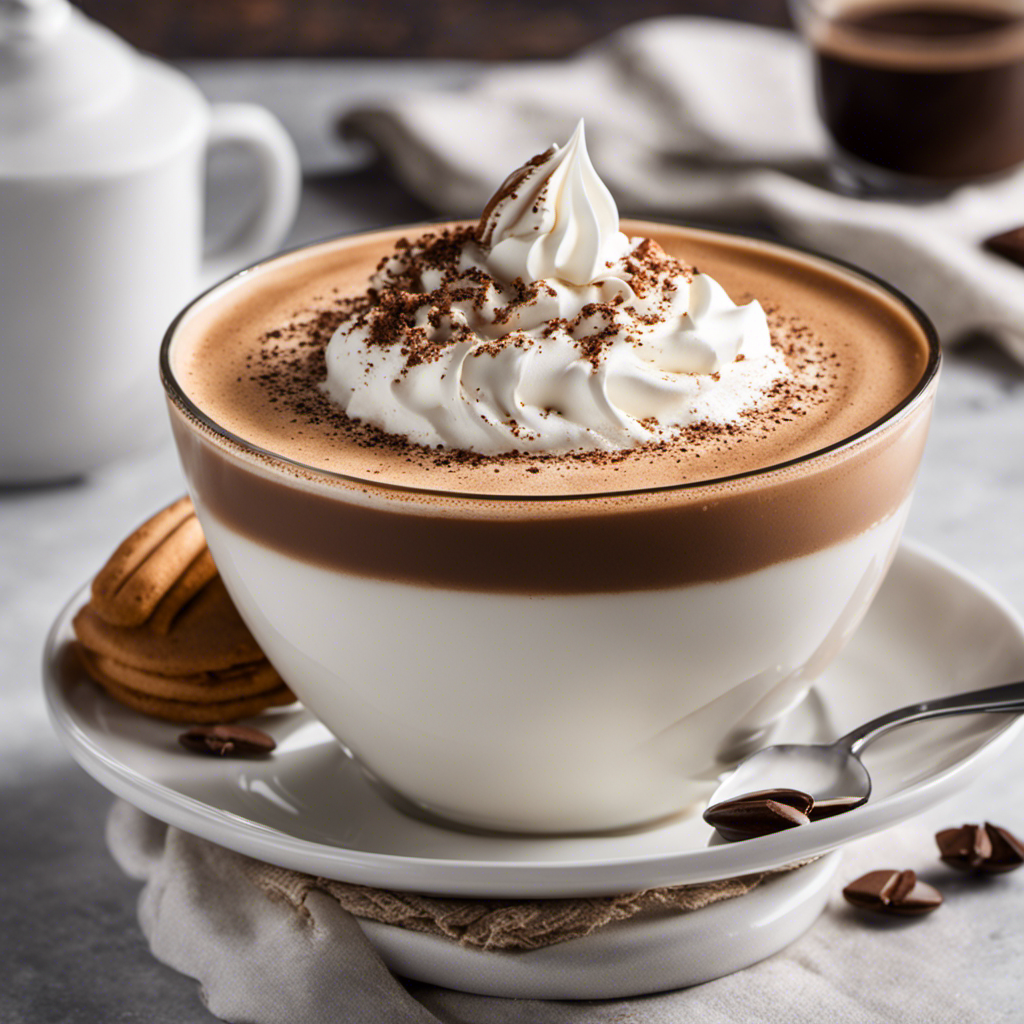
Have you ever pondered what makes a mochaccino so irresistibly delicious? Let me share with you that it’s the impeccable combination of bold espresso, creamy chocolate, and frothy milk.
And the best part? You can easily make this indulgent treat right in the comfort of your own home. In this article, I’ll guide you through the history, ingredients, and step-by-step process of creating the perfect homemade mochaccino.
Get ready to impress your taste buds and become your very own barista!
Key Takeaways
- The mochaccino originated in Italy in the 17th century as a combination of espresso and hot chocolate.
- The flavors of the mochaccino have evolved over time, with variations including caramel, vanilla, and peppermint.
- The cultural significance of the mochaccino varies in different countries.
- To make a homemade mochaccino, you will need strong brewed coffee, cocoa powder, milk, sugar, and whipped cream for topping.
History of the Mochaccino
I’ve read about the history of the mochaccino, and it’s fascinating how this delightful drink has evolved over the years.
The mochaccino, also known as a mocha, originated in Italy in the 17th century. It started as a combination of espresso and hot chocolate, creating a rich and indulgent beverage.
As time went on, the flavors of the mochaccino began to evolve. Today, you can find variations with added flavors like caramel, vanilla, or even peppermint.
In different countries, the cultural significance of the mochaccino varies. In Italy, it’s a staple in their coffee culture, while in the United States, it has become a popular choice among coffee enthusiasts.
The mochaccino has truly become a global favorite, adapting to different tastes and preferences around the world.
Ingredients for a Homemade Mochaccino
I can make a delicious homemade mochaccino with just a few simple ingredients and a little bit of time.
The key to a perfect mochaccino is combining the rich flavors of coffee and chocolate. For this, you’ll need strong brewed coffee, cocoa powder, milk, sugar, and whipped cream for topping.
To start, mix cocoa powder with a small amount of hot water to create a smooth paste. Then, heat milk on the stovetop until hot but not boiling. Add the cocoa paste and sugar to the milk, stirring until dissolved.
Next, pour the coffee into a mug and slowly pour the milk mixture over it. Finally, finish with a dollop of whipped cream. It’s a delightful treat that combines the best of both worlds – coffee and chocolate.
And if you’re looking for coffee alternatives or health benefits, a homemade mochaccino is a perfect choice.
Step-by-Step Guide to Making a Mochaccino at Home
With just a few simple steps and some common ingredients, you can easily make a delicious mochaccino at home. Here’s how:
-
Start by brewing a strong cup of coffee using your preferred method. You can use a traditional drip coffee maker, a French press, or even try alternative brewing methods like pour-over or cold brew for a unique flavor profile.
-
While your coffee is brewing, warm up some milk on the stove or in the microwave. You can use any type of milk you prefer, such as dairy milk, almond milk, or oat milk.
-
Once your coffee is ready, pour it into a mug and add a tablespoon or two of cocoa powder. Mix until the cocoa powder is fully dissolved.
-
Finally, pour the warm milk into the mug and stir well. You can also top it off with some whipped cream or chocolate shavings for an extra indulgent touch.
Making your own mochaccino at home not only allows you to control the quality of ingredients but also offers health benefits. The coffee provides a boost of energy and can improve cognitive function, while cocoa powder is rich in antioxidants and can boost mood. Additionally, using alternative milk options can cater to dietary preferences or restrictions.
Variations and Additions to the Classic Mochaccino Recipe
There are many ways to elevate the classic mochaccino recipe, such as adding a dash of cinnamon or a drizzle of caramel syrup for a hint of sweetness. But have you ever considered exploring different types of mochaccinos for their unique flavors and health benefits? Let’s take a look at some interesting variations:
| Type | Flavor Profile | Health Benefits |
|---|---|---|
| Matcha Mochaccino | Earthy and Creamy | High in antioxidants |
| Coconut Mochaccino | Rich and Nutty | Boosts metabolism |
| Protein Mochaccino | Creamy and Filling | Provides muscle recovery |
These different types of mochaccinos not only offer a diverse range of flavors but also come with their own set of health benefits. Now that we’ve explored the possibilities, let’s move on to some tips and tricks for perfecting your homemade mochaccino.
Tips and Tricks for Perfecting Your Homemade Mochaccino
To achieve the perfect homemade mochaccino, don’t forget to froth the milk until it reaches a creamy consistency. Frothing the milk adds that luxurious touch to your drink, creating a velvety texture that perfectly complements the rich flavors of chocolate and espresso.
Here are some tips and tricks to help you perfect your homemade mochaccino:
-
Use high-quality coffee beans: The best coffee beans for a mochaccino are those with a bold flavor profile. Look for beans with a rich, chocolaty undertone to enhance the chocolate flavor in your drink.
-
Experiment with homemade coffee alternatives: If you’re looking to switch things up, try using alternative coffee options like cold brew or espresso powder. These can add a unique twist to your mochaccino.
-
Adjust the sweetness: Mochaccinos are typically sweet, but you can adjust the sweetness to your preference. Add more or less chocolate syrup or sweetener to achieve the perfect balance for your taste buds.
-
Get creative with toppings: Don’t forget the finishing touches! Whipped cream, chocolate shavings, or a sprinkle of cinnamon can elevate the presentation and add an extra layer of flavor to your homemade mochaccino.
Frequently Asked Questions
Can I Use Regular Coffee Instead of Espresso in a Homemade Mochaccino?
Yes, you can use regular coffee instead of espresso in a homemade mochaccino. However, using espresso will give your drink a stronger and richer flavor, which is one of the benefits of using it.
How Many Calories Are in a Homemade Mochaccino?
I made a homemade mochaccino with whole milk and dark chocolate syrup. It has around 200 calories, but the nutritional value may vary depending on the ingredients used.
Can I Use Almond Milk Instead of Cow’s Milk in a Homemade Mochaccino?
Yes, almond milk can be used as a dairy-free alternative in a homemade mochaccino. It provides a creamy texture and a nutty flavor that complements the coffee and chocolate.
What Type of Cocoa Powder Is Best for Making a Mochaccino at Home?
When making a mochaccino at home, it’s important to choose the best cocoa powder. Look for high-quality brands, like Ghirardelli or Valrhona, for a rich and delicious flavor. Don’t forget to consider alternative milk options, like almond milk, for a dairy-free version.
Can I Make a Mochaccino Without a Milk Frother?
Sure, you can make a mochaccino without a milk frother. There are alternative methods like using a whisk or a handheld frother. These frothing techniques will give you a similar creamy texture.
Conclusion
In conclusion, the mochaccino is a beloved coffee beverage that combines the rich flavors of chocolate and espresso.
By following the step-by-step guide and using high-quality ingredients, you can easily make a delicious mochaccino at home.
Don’t be afraid to get creative with variations and additions to suit your taste.
With a little practice and a few tips and tricks, you’ll be able to perfect your homemade mochaccino and enjoy this indulgent treat whenever you like.
Justin is a seasoned author, coffee and tea enthusiast, and an essential member of the Cappuccino Oracle team. With a keen appreciation for the complexities of coffee, coffee alternatives, and tea, Justin has dedicated his professional career to exploring these realms and sharing his insights with readers worldwide.
Justin’s immersion in the world of coffee, coffee alternatives, and tea began at a young age, kindling a passion that extended beyond mere consumption. This love for these beverages led him to combine his talent for writing with his devotion to coffee and tea, bringing him to Cappuccino Oracle as a dedicated author.
Espresso
Iced Macchiato – What Is It and How to Make It at Home
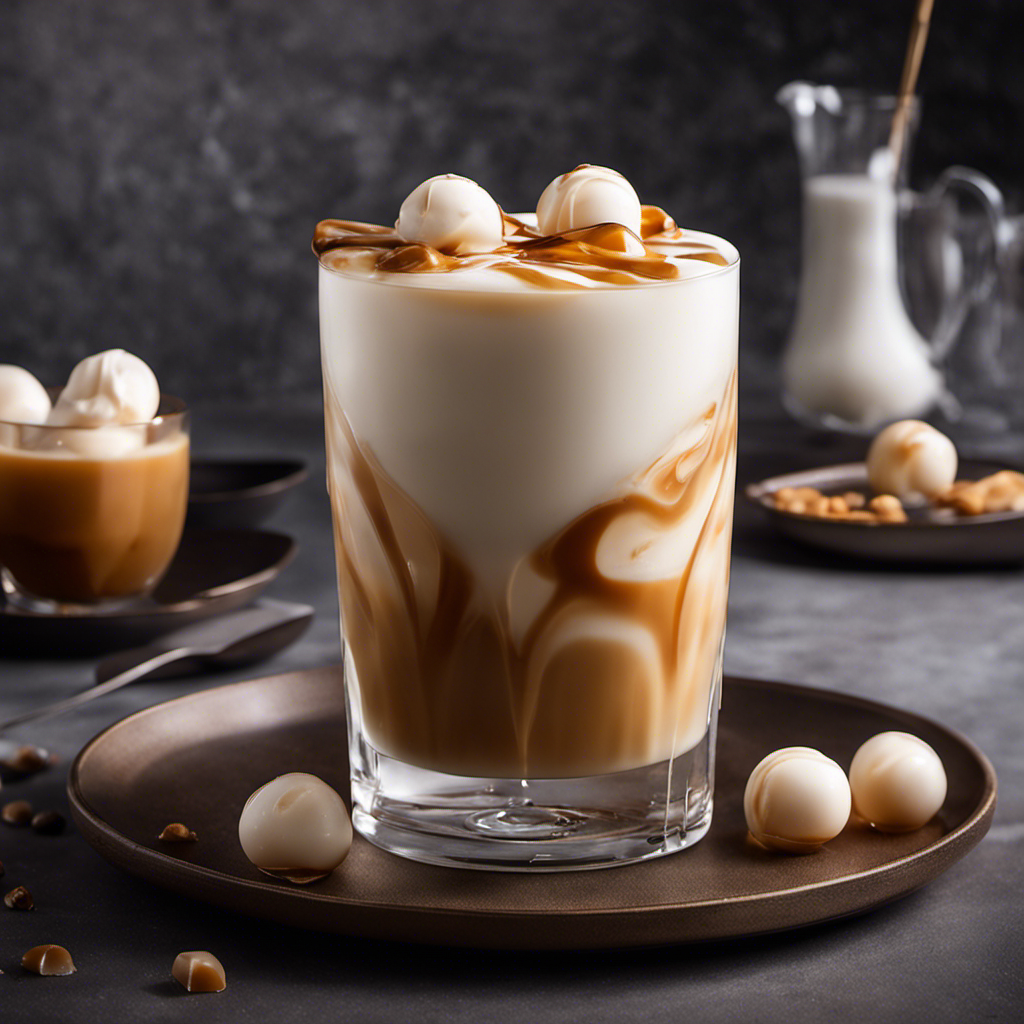
I enjoy a delicious iced macchiato on a warm summer day. Were you aware that it’s surprisingly simple to prepare at home? With just a few basic ingredients and some knowledge, you can savor this invigorating coffee drink whenever you desire.
In this article, I’ll share with you the secrets to making the perfect iced macchiato, from brewing the espresso to frothing the milk.
So grab your favorite mug and let’s get started!
Key Takeaways
- Iced macchiato originated in Italy as a variation of traditional macchiato.
- The base ingredients of an iced macchiato are espresso, milk, sweetener (optional), and ice.
- Brewing espresso for an iced macchiato requires precision and consideration of factors like grind size, brewing time, and water temperature.
- Frothing milk for an iced macchiato involves using techniques like using cold milk, alternative milk options, and a steam wand or frother.
The Origins of Iced Macchiato
I’ve always been curious about the origins of the iced macchiato. This popular coffee beverage has its roots in Italy, where the term ‘macchiato’ means ‘stained’ or ‘marked.’ Traditionally, a macchiato is made by adding a small amount of espresso to a cup and then ‘staining’ it with a dollop of frothed milk.
The iced macchiato, however, is a variation that emerged in recent years. It’s made by pouring espresso over a glass filled with ice and then adding a small amount of milk or milk foam. The result is a refreshing and flavorful drink, perfect for hot summer days.
Nowadays, there are many variations of the iced macchiato, with different flavors and toppings added to enhance the taste. From caramel to vanilla to chocolate, there’s an iced macchiato for every coffee lover’s preference.
Understanding the Ingredients
Understanding the ingredients is essential for making a delicious iced macchiato at home. When it comes to flavor profiles, the combination of sweet and bitter is what makes an iced macchiato so enticing. Here are some key ingredients to consider:
- Espresso: The base of an iced macchiato, providing a strong and rich flavor.
- Milk: Adds creaminess and balances out the espresso’s intensity.
- Sweetener: Optional, but commonly used to enhance the overall taste.
- Ice: Keeps the drink refreshing and cold.
- Optional flavorings: Vanilla, caramel, or chocolate syrups can be added for extra flavor.
Understanding different brewing methods is also important. Whether you prefer using an espresso machine, a French press, or a moka pot, each method can influence the taste and strength of your iced macchiato. Experimenting with different brewing techniques and ratios will help you find the perfect balance of flavors for your homemade iced macchiato.
The Art of Brewing Espresso
Brewing espresso is an intricate process that requires precision and skill. To achieve the perfect cup, espresso brewing techniques and the importance of water temperature can’t be overlooked.
When it comes to espresso brewing techniques, there are various methods to choose from. Some popular ones include the classic manual espresso machine, the convenient pod-based system, and the modern espresso machine with advanced features. Each technique requires careful consideration of factors such as grind size, brewing time, and pressure.
However, one common factor that’s crucial in all techniques is water temperature. The ideal water temperature for brewing espresso is between 195°F and 205°F. This range ensures proper extraction of flavors and oils from the coffee grounds, resulting in a rich and balanced espresso shot.
Transitioning to the next section, after perfecting the espresso shot, the focus shifts to perfecting the milk froth.
Perfecting the Milk Froth
I absolutely love experimenting with different techniques to perfect the milk froth for my iced macchiatos. It’s an art form in itself, and getting that perfect creamy texture on top of my espresso is essential for a delicious drink.
When it comes to creating the perfect milk froth, there are a few things to consider. Here are some tips to help you explore alternative milk options and troubleshoot common frothing issues:
- Use cold milk: Starting with cold milk will help create a better froth.
- Choose the right milk: Experiment with different types of milk, such as almond, oat, or soy, to find the one that froths best for you.
- Froth the milk properly: Use a steam wand or a frother to create a creamy and velvety texture.
- Watch the temperature: Overheating the milk can result in a burnt taste, so make sure to stop frothing when the milk reaches around 150°F.
- Clean and maintain your equipment: Regularly clean your steam wand or frother to ensure optimal frothing performance.
By following these tips, you’ll be on your way to creating the perfect milk froth for your iced macchiatos, and exploring alternative milk options along the way.
Happy frothing!
Step-by-Step Guide to Making Iced Macchiato at Home
To make an iced macchiato at home, I followed a simple step-by-step guide using a shot of espresso, a splash of milk, and a drizzle of caramel syrup.
First, I brewed a strong shot of espresso and let it cool.
Then, I filled a glass with ice and poured the espresso over it.
Next, I added a splash of milk, using almond milk as an alternative option for a creamy and nutty flavor.
To enhance the taste, I drizzled caramel syrup over the top, giving it a sweet and indulgent twist.
The beauty of making an iced macchiato at home is that you can get creative with variations.
You can experiment with different types of milk, such as oat milk or coconut milk, to suit your preferences.
Additionally, you can add flavored syrups like vanilla or hazelnut to customize your macchiato even further.
Enjoy this refreshing and satisfying beverage right in the comfort of your own home.
Frequently Asked Questions
What Is the Nutritional Content of an Iced Macchiato?
The nutritional content of an iced macchiato depends on the ingredients used. It can provide benefits such as a boost of energy from caffeine, but may also have health concerns like added sugars or high calorie content.
Can I Use Any Type of Milk to Make an Iced Macchiato?
I can use any type of milk to make an iced macchiato. Options like almond, oat, or soy milk can be used as alternatives. Additionally, different types of sweeteners can enhance the flavor.
How Long Does It Take to Brew Espresso for an Iced Macchiato?
To brew espresso for an iced macchiato, I recommend using an espresso machine and grinding fresh coffee beans. It typically takes about 25-30 seconds to extract the espresso. Froth the milk using a frother or steam wand until it reaches a creamy consistency.
Can I Use a Regular Blender to Froth the Milk for an Iced Macchiato?
Yes, you can use a regular blender to froth the milk for an iced macchiato. It’s a convenient and cost-effective alternative. You can also explore different milk options like almond, oat, or soy for a unique twist.
Can I Customize the Flavor of an Iced Macchiato by Adding Syrups or Toppings?
Yes, you can customize the flavor of an iced macchiato by adding syrups or toppings. It’s a great way to experiment with different milk alternatives and create your own unique and delicious drink.
Conclusion
In conclusion, making an iced macchiato at home is a simple process that can be mastered with practice. By understanding the origins of this popular drink, familiarizing oneself with the ingredients, and perfecting the art of brewing espresso and frothing milk, anyone can enjoy a delicious iced macchiato from the comfort of their own home.
Fun fact: Did you know that iced macchiatos are the most popular coffee choice among millennials, accounting for 40% of their coffee orders?
Noah, the Editor-in-Chief at Cappuccino Oracle, plays a pivotal role in shaping the voice and vision of our renowned platform. With an unwavering passion for coffee, coffee alternatives, and tea, Noah leads Cappuccino Oracle towards new horizons in the realm of coffee journalism.
Beyond his professional responsibilities, Noah serves as a mentor and guiding force for his team. His dedication to journalistic excellence and genuine love for coffee, coffee alternatives, and tea continue to inspire and motivate the Cappuccino Oracle family. In the ever-evolving world of these beverages, Noah’s leadership ensures that our platform remains at the forefront, delivering enlightening and enjoyable content to our readers worldwide.
-

 Coffee Basics7 days ago
Coffee Basics7 days agoThe Ultimate Guide To Buying Nespresso Pods: Where And How?
-

 Coffee Basics1 week ago
Coffee Basics1 week ago11 Best Medium Roast Coffees For Your Perfect Cup
-

 Coffee Basics1 week ago
Coffee Basics1 week agoStarbucks Venti Drinks: Customization And Pricing Guide
-

 Coffee Basics6 days ago
Coffee Basics6 days agoPerfect Your Espresso With Puck Screens: A Barista’s Secret
-

 Cappuccino Oracle Selected Reviews4 days ago
Cappuccino Oracle Selected Reviews4 days agoSmeg Knife Block Review Review [2024]
-

 Coffee Basics1 week ago
Coffee Basics1 week agoWhat Is Half-Caff Coffee? (And How Much Caffeine Is In It?)
-
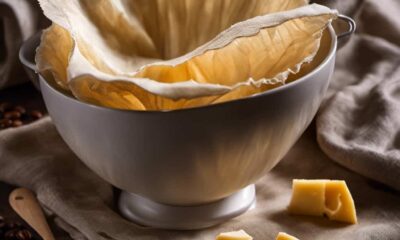
 Coffee Basics12 hours ago
Coffee Basics12 hours agoHow to Make Oat Milk for Coffee
-

 Coffee Basics1 week ago
Coffee Basics1 week ago9 Best Ground Coffee Brands For Your Perfect Cup

















